 W
WMarina Abramović is a Serbian conceptual and performance artist, philanthropist, writer, and filmmaker. Her work explores body art, endurance art and feminist art, the relationship between the performer and audience, the limits of the body, and the possibilities of the mind. Being active for over four decades, Abramović refers to herself as the "grandmother of performance art". She pioneered a new notion of identity by bringing in the participation of observers, focusing on "confronting pain, blood, and physical limits of the body". In 2007, she founded the Marina Abramović Institute (MAI), a non-profit foundation for performance art.
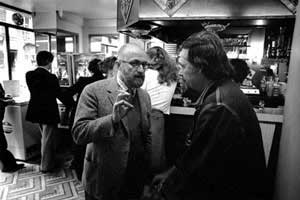 W
WPierre Alechinsky is a Belgian artist. He has lived and worked in France since 1951. His work is related to tachisme, abstract expressionism, and lyrical abstraction.
 W
WLouis-Jules André was a French academic architect and the head of an important atelier at the École des Beaux-Arts.
 W
WPat Andrea is a Dutch contemporary painter and sculptor. He is one of the representatives of the New Subjectivity.
 W
WXavier Arsène-Henry (1919-2009) was a French modernist architect and urban planner. He designed many tall residential buildings on the outskirts of French cities.
 W
WCésar, also occasionally referred to as César Baldaccini, was a noted French sculptor.
 W
WLouis-Pierre Baltard was a French architect, and engraver and father of Victor Baltard.
 W
WAntoine Berjon was a French painter and designer, among the most important flower painters of 19th-century France. He worked in a variety of media including oil, pastel, watercolour, and ink.
 W
WPaul Bigot was a French architect.
 W
WPaul-Joseph Blanc was a French painter who specialized in scenes from ancient history and mythology.
 W
WLouis-Simon Boizot (1743–1809) was a French sculptor whose models for biscuit figures for Sèvres porcelain are better-known than his large-scale sculptures.
 W
WChristian Liberté Boltanski was a French sculptor, photographer, painter, and film maker. He is best known for his photography installations and contemporary French conceptual style.
 W
WLéon Joseph Florentin Bonnat was a French painter, Grand Officer of the Légion d'honneur and professor at the Ecole des Beaux Arts.
 W
WHenri Bouchard, was a French sculptor. His work was part of the sculpture event in the art competition at the 1924 Summer Olympics.
 W
WCharles Le Brun was a French painter, physiognomist, art theorist, and a director of several art schools of his time. As court painter to Louis XIV, who declared him "the greatest French artist of all time", he was a dominant figure in 17th-century French art and much influenced by Nicolas Poussin.
 W
WJean-Marc Bustamante is a French artist, painter, sculptor and photographer. He is a noted conceptual and installation artist and has incorporated ornamental design and architectural space in his works.
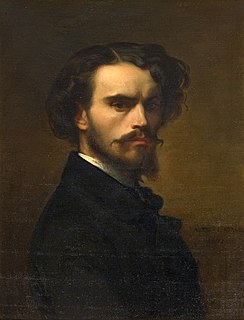 W
WAlexandre Cabanel was a French painter. He painted historical, classical and religious subjects in the academic style. He was also well known as a portrait painter. According to Diccionario Enciclopedico Salvat, Cabanel is the best representative of the L'art pompier, and was Napoleon III's preferred painter.
 W
WGeorges Candilis was a Greek-French architect and urbanist.
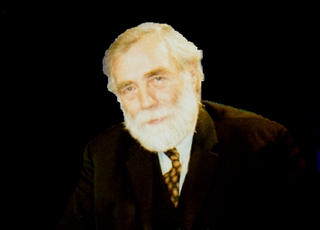 W
WPierre Carron is a French sculptor and painter, especially known for his portrayals of children and natural landscapes.
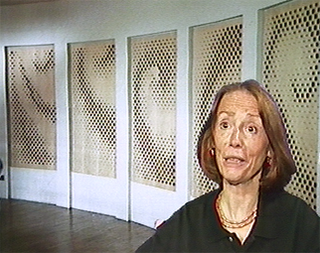 W
WBéatrice Casadesus is a French painter and sculptor, and professor at the École nationale supérieure des Beaux-Arts in Paris, France.
 W
WPierre-Jules Cavelier was a French academic sculptor.
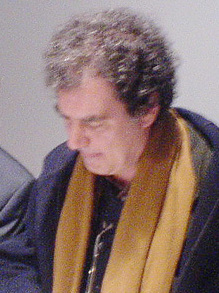 W
WJean-François Chevrier is an art historian, art critic and exhibition curator. He lives and works in Paris. He is Professor in the History of Contemporary Art at the École nationale supérieure des Beaux-Arts in Paris.
 W
WClaude Closky is a French contemporary artist who lives and works in Paris, France.
 W
WAimé-Jules Dalou was a French sculptor, recognized as one of the most brilliant virtuosos of nineteenth-century France, admired for his perceptiveness, execution, and unpretentious realism.
 W
WRichard Deacon CBE is a British abstract sculptor, and a winner of the Turner Prize.
 W
WGuillaume-Benjamin-Amand Duchenne was a French neurologist who revived Galvani's research and greatly advanced the science of electrophysiology. The era of modern neurology developed from Duchenne's understanding of neural pathways and his diagnostic innovations including deep tissue biopsy, nerve conduction tests (NCS), and clinical photography. This extraordinary range of activities was achieved against the background of a troubled personal life and a generally indifferent medical and scientific establishment.
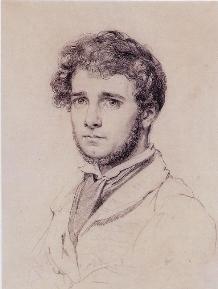 W
WAugustin-Alexandre Dumont, known as Auguste Dumont was a French sculptor.
 W
WFang Ganmin was a Chinese French-trained painter, sculptor and educator, who was educated in Paris and spent most of his adult life in China. Regarded as one of the fathers of Chinese oil painting, Fang was born in the Wenling county, Zhejiang province. He began studying painting in 1924 and went to Paris in 1925, enrolling in the École nationale supérieure des Beaux-Arts, making him, along with Xu Beihong and Sanyu, one of the first Chinese painters to study abroad in France. Upon returning to China, he taught at the National Arts Academy, Hangzhou, becoming a professor at the Western Painting Department. During the Cultural Revolution, Fang was shamed and tortured by the Red Guards, and his works were destroyed. He died in 1984. His students include Zao Wou-Ki, Chu Teh-Chun and Wu Guanzhong.
 W
WFleury François Richard, sometimes called Fleury-Richard, was a painter of the École de Lyon. A student of Jacques-Louis David, Fleury-Richard and his friend Pierre Révoil were precursors of the Troubador style.
 W
WCharles-Louis Girault was a French architect.
 W
WJean-Baptiste Claude Eugène Guillaume was a French sculptor.
 W
WGuillaume Guillon-Lethière was a French neoclassical painter.
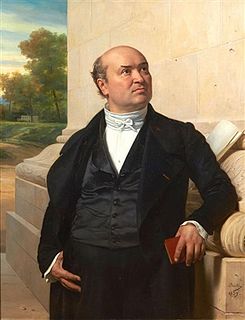 W
WJean-Nicholas Huyot was a French architect, best known for his 1833 continuation of work on the Arc de Triomphe from the plans of Jean Chalgrin.
 W
WFabrice Hybert, also known by the pseudonym Fabrice Hyber, is a French plastic artist born on 12 July 1961 in Luçon (Vendée). At 56, he was elected to the Academy of Fine Arts on April 25, 2018.
 W
WJean-Antoine Injalbert (1845–1933) was a much-decorated French sculptor, born in Béziers.
 W
WTadashi Kawamata is a Japanese artist, born in Mikasa City / Hokkaido, who lives and works in Paris.
 W
WVictor Alexandre Frederic Laloux was a French Beaux-Arts architect and teacher.
 W
WJean-Paul Laurens was a French painter and sculptor, and one of the last major exponents of the French Academic style.
 W
WClaude-Nicolas Ledoux was one of the earliest exponents of French Neoclassical architecture. He used his knowledge of architectural theory to design not only domestic architecture but also town planning; as a consequence of his visionary plan for the Ideal City of Chaux, he became known as a utopian. His greatest works were funded by the French monarchy and came to be perceived as symbols of the Ancien Régime rather than Utopia. The French Revolution hampered his career; much of his work was destroyed in the nineteenth century. In 1804, he published a collection of his designs under the title L'Architecture considérée sous le rapport de l'art, des mœurs et de la législation. In this book he took the opportunity of revising his earlier designs, making them more rigorously neoclassical and up to date. This revision has distorted an accurate assessment of his role in the evolution of Neoclassical architecture. His most ambitious work was the uncompleted Royal Saltworks at Arc-et-Senans, an idealistic and visionary town showing many examples of architecture parlante. Conversely his works and commissions also included the more mundane and everyday architecture such as approximately sixty elaborate tollgates around Paris in the Wall of the General Tax Farm.
 W
WCharles Henri-Camille Lemaresquier was a French architect and teacher.
 W
WJean-Julien Lemordant was a Breton artist and French soldier and patriot.
 W
WLin Fengmian, originally Lin Fengming (林凤鸣), was a Chinese painter and is considered a pioneer of modern Chinese painting for blending Chinese and Western styles, he was one of the earliest Chinese painters to study in Europe. He was also an important innovator in the area of Chinese art education. He was one of the pioneers of Chinese modern art, who earned the title of "The Four Great Academy Presidents".
 W
WHenri-Charles Maniglier was a French sculptor.
 W
WAnnette Messager is a French visual artist. In 2005 she won the Golden Lion Award at the Venice Biennale for her artwork at the French Pavilion. In 2016, she won the prestigious Praemium Imperiale International Arts Award. She lives and works in Malakoff, France.
 W
WGustave Moreau was a French artist and an important figure in the Symbolist movement. Jean Cassou called him "the Symbolist painter par excellence." He was an influential forerunner of symbolism in the visual arts in the 1860s, and at the height of the symbolist movement in the 1890s, he was among the most significant painters. Art historian Robert Delevoy wrote that Moreau "brought symbolist polyvalence to its highest point in Jupiter and Semele" He was a prolific artist who produced over 15,000 paintings, watercolors, and drawings. Moreau painted allegories and traditional biblical and mythological subjects favored by the fine art academies. J. K. Huysmans wrote " Gustave Moreau has given new freshness to dreary old subjects by a talent both subtle and ample: he has taken myths worn out by the repetitions of centuries and expressed them in a language that is persuasive and lofty, mysterious and new." The female characters from the bible and mythology that he so frequently depicted came to be regarded by many as the archetypical symbolist woman. His art fell from favor and received little attention in the early 20th century but, beginning in the 1960s and 70s, he has come to be considered among the most paramount of symbolist painters.
 W
WPan Yuliang, born in Yangzhou as Chen Xiuqing, and was renamed Zhang Yuliang (張玉良) when adopted by her maternal uncle after the early passing of her parents. She was a Chinese painter, renowned as the first woman in the country to paint in the Western style. She had studied in Shanghai and Paris. Because her modernist works caused controversy and drew severe criticism in China during the 1930s, Pan returned to Paris in 1937 to live and work for the next 40 years. She taught at the École des Beaux Arts, won several awards for her work, had exhibits internationally in Europe, the United States and Japan, and was collected by major institutions. In 1985 after her death, much of her work was transported to China, collected by the National Art Museum in the capital of Beijing, the larger part are collected by the Anhui Museum in Hefei, the capital of Anhui Province. Nevertheless, significant paintings, sculptures and prints are still conserved in France in the collection of the Cernuschi museum. Her life as an artist has been portrayed in novels and film in China and the United States. Her art evolved within the flux of transformations where conflicting dichotomies of East and West, tradition and modernity, male chauvinism and emerging feminism co-existed. Pan is also figured as who engaged with labels, such as " contemporary/modern," " Chinese," and " woman" artist, while questioning them. Despite being remembered for introducing Western paintings to China, she was able to provide a new lens to how these women were seen through her paintings as not just objects but subjects.
 W
WJean-Louis Pascal was an academic French architect.
 W
WLouis Pasteur was a French chemist and microbiologist renowned for his discoveries of the principles of vaccination, microbial fermentation, and pasteurization. His research in chemistry led to remarkable breakthroughs in the understanding of the causes and preventions of diseases, which laid down the foundations of hygiene, public health and much of modern medicine. His works are credited to saving millions of lives through the developments of vaccines for rabies and anthrax. He is regarded as one of the founders of modern bacteriology and has been honoured as the "father of bacteriology" and as the "father of microbiology".
 W
WAuguste Perret was a French architect and a pioneer of the architectural use of reinforced concrete. His major works include the Théâtre des Champs-Élysées, the first Art Deco building in Paris; the Church of Notre-Dame du Raincy (1922–23); the Mobilier National in Paris (1937); and the French Economic, Social and Environmental Council building in Paris (1937–39). After World War II he designed a group of buildings in the centre of the port city of Le Havre, including St. Joseph's Church, Le Havre, to replace buildings destroyed by bombing during World War II. His reconstruction of the city is now a World Heritage Site.
 W
WIsidore-Alexandre-Augustin Pils (1815–1875) was a French academic painter of religious and military subjects.
 W
WEmmanuel Pontremoli was a French architect and archaeologist.
 W
WEugène Robert Poughéon born in Paris, was a French artist, painter, illustrator and museum curator.
 W
WJames Pradier was a Genevan-born French sculptor best known for his work in the neoclassical style.
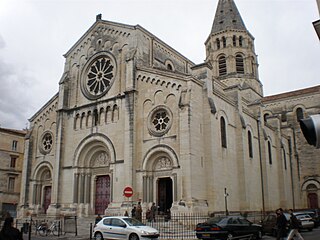 W
WCharles-Auguste Questel was a French architect and teacher. As well as designing new buildings, his projects included the preservation of historical monuments. He worked on several historical monuments included in France's first list of such structures, the list of 1840.
 W
WPaul Marie Louis Pierre Richer was a French anatomist, physiologist, sculptor and anatomical artist who was a native of Chartres. He was a professor of artistic anatomy at the École nationale supérieure des Beaux-Arts in Paris, as well as a member of the Académie Nationale de Médecine (1898).
 W
WThierry Smolderen is an essay writer, and a scenario writer of Belgian comic strips, for example of Gipsy.
 W
WYan Wenliang was a Chinese painter and educator, who is regarded as one of the fathers of Chinese oil painting and an important art educator of his time. Born in Suzhou, Jiangsu province, Yan began studying painting in 1909, founded the Suzhou Art Academy along with Zhu Shijie in 1922 and went to Paris in 1929, enrolling in the L'Ecole Superieure Nationale des Beaux Arts, making him, along with Xu Beihong and Sanyu, one of the earliest Chinese artists to study abroad in France. He was one of the four pioneers of Chinese modern art who earned the title of "The Four Great Academy Presidents".